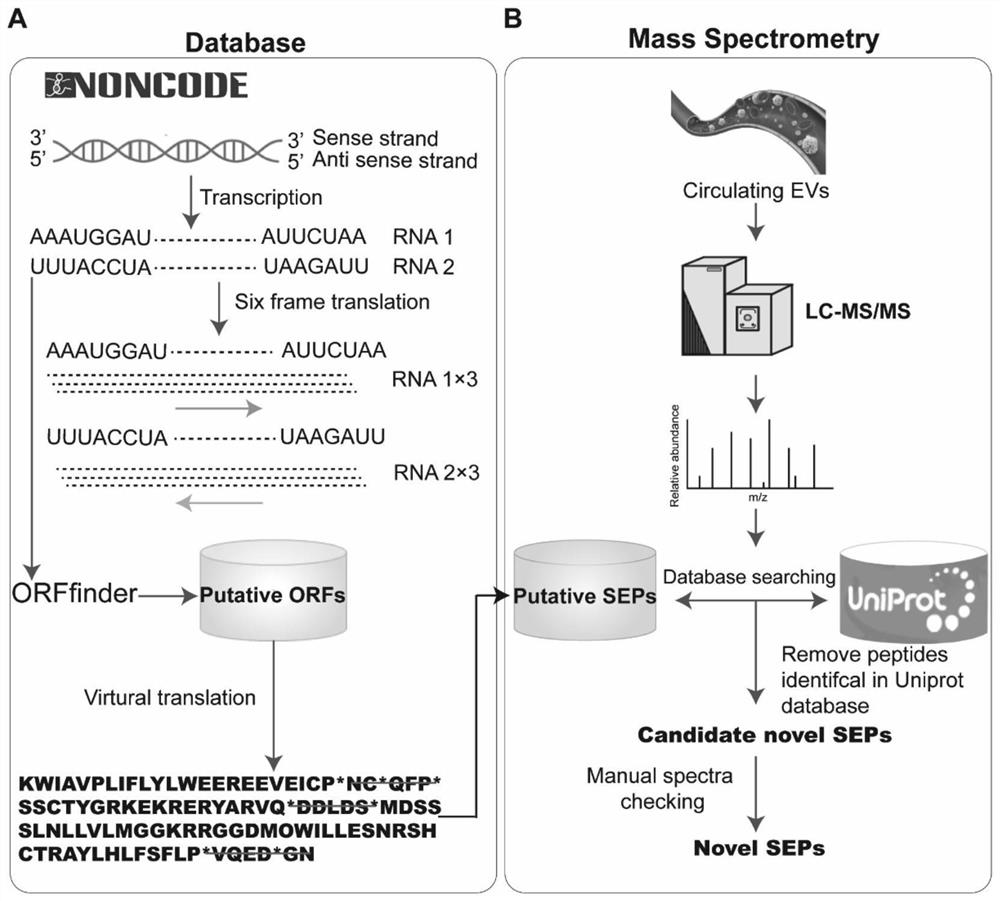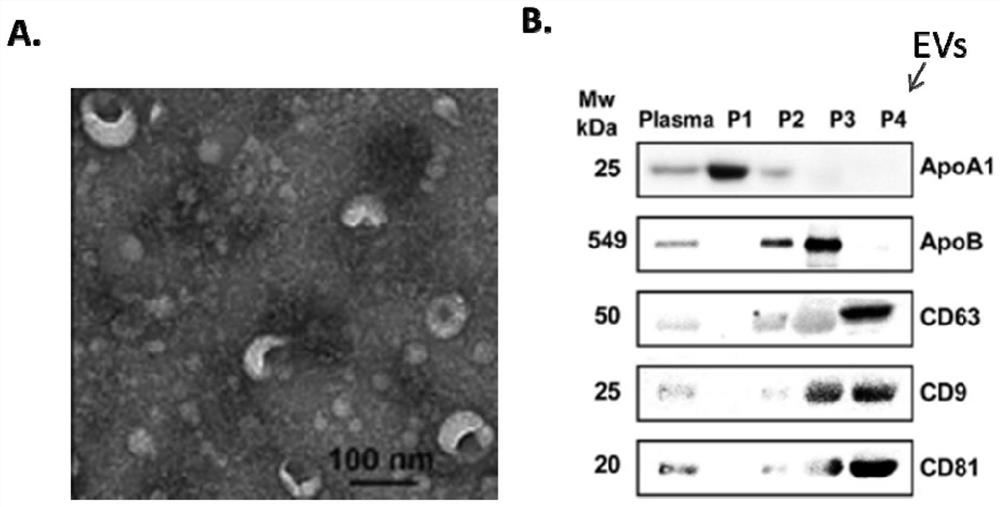Brain glioma biomarker and application thereof
A biomarker, glioma technology, applied in the field of lncRNA-encoded polypeptide biomarkers, which can solve the problems of difficult brain tumors and lag in liquid biopsy
- Summary
- Abstract
- Description
- Claims
- Application Information
AI Technical Summary
Problems solved by technology
Method used
Image
Examples
Embodiment 1
[0031] Such as figure 1 As shown in A, the construction of non-coding RNA-encoded polypeptide database: first download all human lncRNA transcripts from the NONCODE database (NONCODEV4), and then use ORFfinder (v0.3.0) to scan all lncRNA transcripts to obtain Kozak sequences and the open reading frame (ORF) initiated by AUG. For non-AUG starting sequences, use the six-frame translation mode to perform frameshift reading frames on all transcripts, and use the stop codon as the segmentation site of the non-AUG starting ORF, and extract the space between the two stop codons The region is used as a potential ORF, and then all potential lncRNAs ORFs obtained by ORFfinder and six-frame translation mode are combined, and the potential lncRNA-encoded polypeptide data set is obtained by theoretical translation, and polypeptides with less than 6 amino acids and more than 200 amino acids are further excluded. After removing redundancy, the theoretical lncRNA-encoded polypeptide database...
Embodiment 2
[0033] Analysis and identification of plasma extracellular vesicle lncRNA-encoded polypeptides from glioma patients and healthy controls figure 1 As shown in B, the plasma / serum extracellular vesicles obtained in vitro from the target patient were further analyzed and identified by LC-MS / MS for lncRNA-encoded polypeptides, and healthy samples were used as controls. The specific experimental steps are as follows:
[0034] 1) Take 100 μL of plasma from each patient sample or healthy sample, perform ultracentrifugation at 2500×g for 10 minutes to remove dead cells and platelets, transfer the supernatant to a new EP tube, and add an equal volume of PBS solution filtered through a 0.22 μm filter membrane Make a dilution.
[0035]2) Using asymmetric flow field combined with ultraviolet absorption detector and multi-angle excitation light scattering detector (AF4-UV / MALS) to separate and enrich extracellular vesicles in plasma samples. The conditions are as follows: a polyester film...
PUM
 Login to view more
Login to view more Abstract
Description
Claims
Application Information
 Login to view more
Login to view more - R&D Engineer
- R&D Manager
- IP Professional
- Industry Leading Data Capabilities
- Powerful AI technology
- Patent DNA Extraction
Browse by: Latest US Patents, China's latest patents, Technical Efficacy Thesaurus, Application Domain, Technology Topic.
© 2024 PatSnap. All rights reserved.Legal|Privacy policy|Modern Slavery Act Transparency Statement|Sitemap



